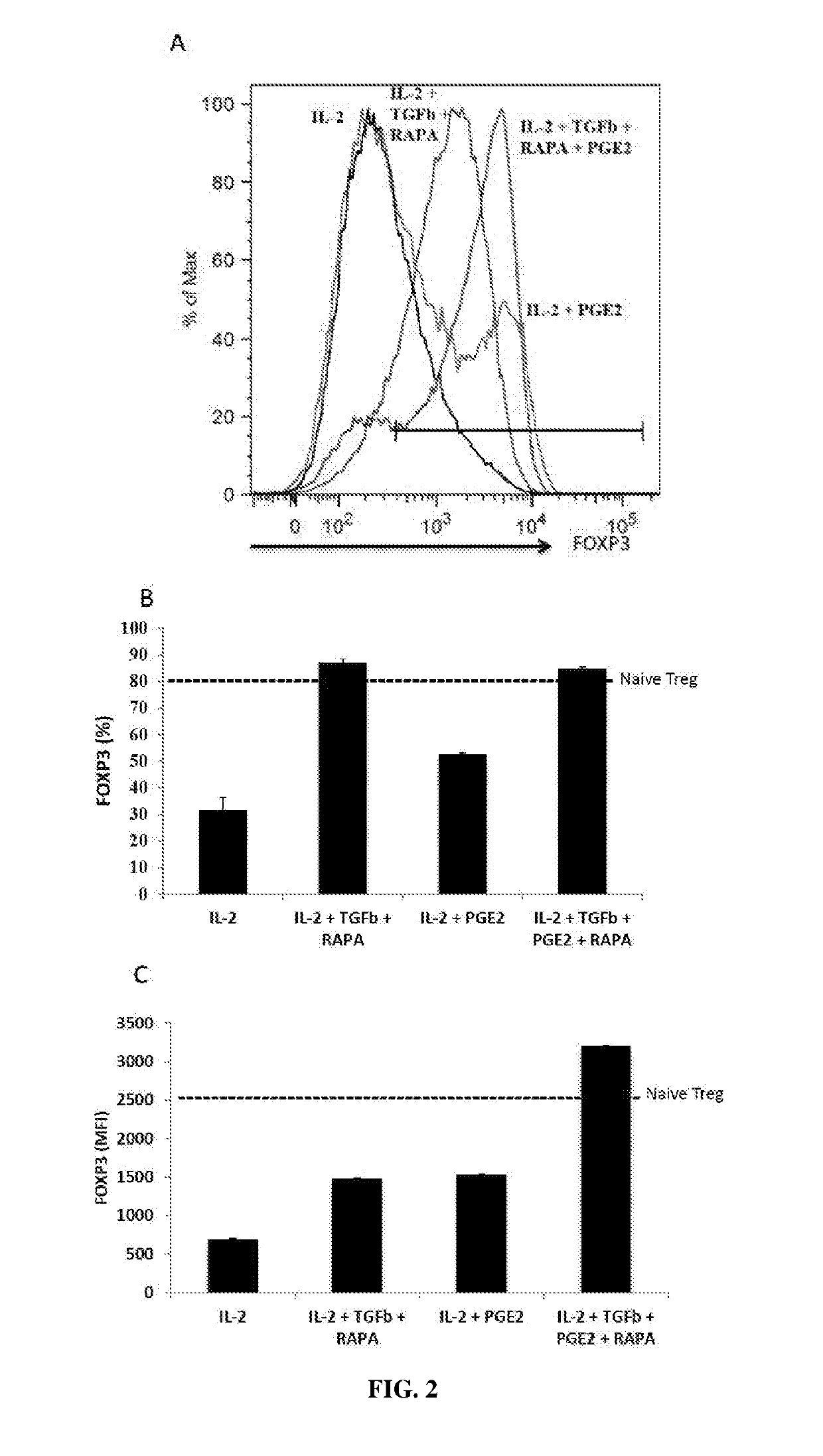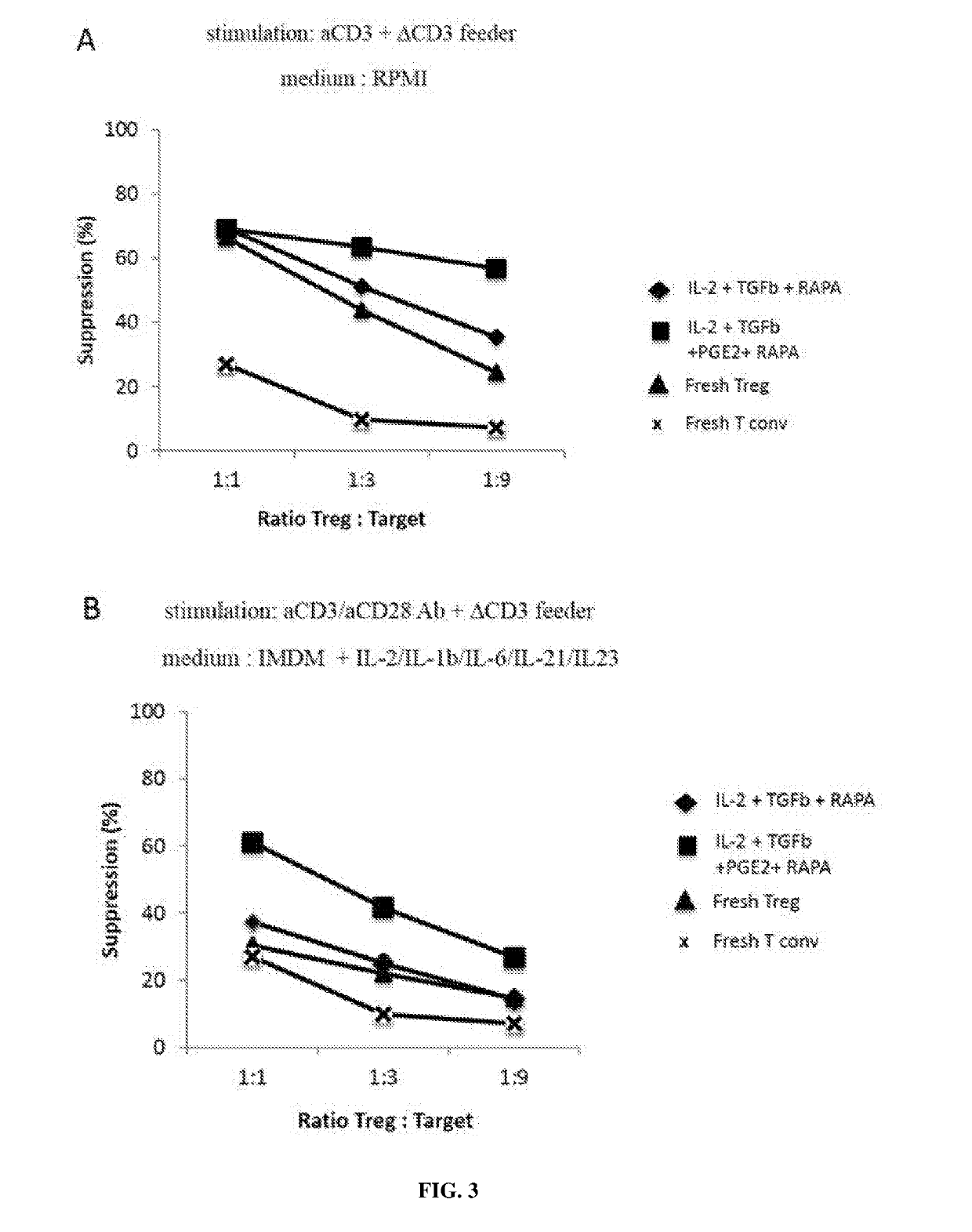Ex vivo generation of mhcii restricted cd4+foxp3+ regulatory t cells and therapeutic uses thereof
a technology of mhcii and cd4 is applied in the field of ex vivo generation and expansion of mhcii restricted cd4 + foxp3 + regulatory t cells, which can solve the problems of insufficient isolation of pure regulatory t cells, lack of specific cellular markers for adequate purification, and inability to access foxp3 protein, etc., and achieve stable inflammatory condition
- Summary
- Abstract
- Description
- Claims
- Application Information
AI Technical Summary
Benefits of technology
Problems solved by technology
Method used
Image
Examples
examples
[0323]The present invention is further illustrated by the following examples.
[0324]Materials and Methods
[0325]Human Blood Sample. Blood samples from healthy individuals originated from Etablissement Francais du Sang (EFS, Paris). Blood cells are collected using standard procedures.
[0326]Human tumor sample. Tumor tissue sample originated from patient with Luminal A and Luminal B Breast cancer (Institut Jean Godinot, Reims).
[0327]Cell Purification and Culture.
[0328]Peripheral blood mononuclear cells (PBMCs) are isolated by density gradient centrifugation on Ficoll-Hypaque (Pharmacia). PBMCs are used either as fresh cells or stored frozen in liquid nitrogen. T-cell subsets and T cell-depleted accessory cells (ΔCD3 cells) are isolated from either fresh or frozen PBMCs. T celldepleted accessory cells (ΔCD3 cells) are isolated by negative selection from PBMCs by incubation with anti-CD3coated Dynabeads (Dynal Biotech) and are irradiated at 3000 rad (referred to as ΔCD3-feeder).
[0329]CD3+ ...
PUM
 Login to View More
Login to View More Abstract
Description
Claims
Application Information
 Login to View More
Login to View More - R&D
- Intellectual Property
- Life Sciences
- Materials
- Tech Scout
- Unparalleled Data Quality
- Higher Quality Content
- 60% Fewer Hallucinations
Browse by: Latest US Patents, China's latest patents, Technical Efficacy Thesaurus, Application Domain, Technology Topic, Popular Technical Reports.
© 2025 PatSnap. All rights reserved.Legal|Privacy policy|Modern Slavery Act Transparency Statement|Sitemap|About US| Contact US: help@patsnap.com



